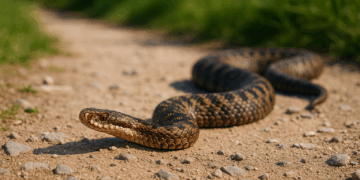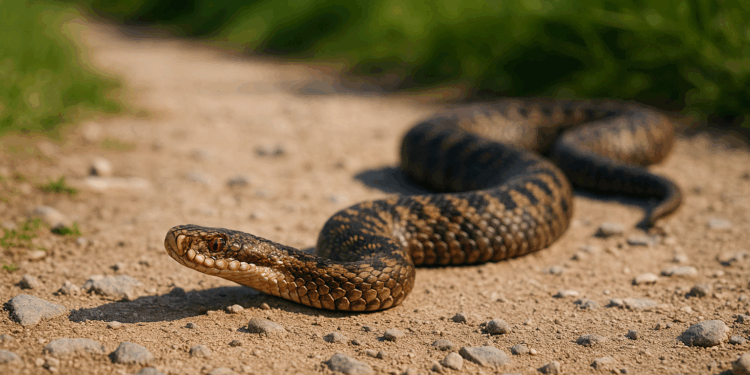Story Highlight
– UK has very few dangerous animals overall.
– Only one poisonous snake: the adder.
– Northern Ireland is free of adders.
– Domestic dogs caused 16 deaths in 2023-24.
– Wolves and bears have been eradicated from Britain.
Full Story
The British Isles have long been celebrated for their remarkable genetic isolation and the absence of many dangerous wildlife species. William Shakespeare famously described the land as ‘a blessed plot’, a sentiment that may reflect the perception of safety from harmful animals. Across mainland Britain, most inhabitants can go about their lives without fear of encountering menacing creatures.
Among the very few venomous species found in the region is the adder (Vipera berus), the only snake with a toxic bite residing in England and Wales; intriguingly, Northern Ireland remains free from this creature. The surrounding waters, too, lack the notorious predatory sharks that can pose a threat in other parts of the world. Historically, the British Isles have had their share of formidable beasts, including bears and wolves, which have since been eradicated from the landscape, further contributing to a sense of safety.
Nevertheless, the notion that Britain is devoid of peril from wildlife may be misleading. As the population grows increasingly urbanised, life in the countryside and rural areas can often foster a misconception of a completely benign environment. Although large animals may have disappeared from the landscape, Britain is home to several domesticated animals that, under certain circumstances, can deliver harm.
For instance, domestic dogs are widespread across households in the UK and are generally regarded as loving companions. However, the potential for aggression in dogs is a genuine concern. In the 2023-2024 period, England and Wales reported 16 fatalities attributed to dog attacks, highlighting the dangers that can lurk within what many consider safe environments. The rise in dog ownership during and after the pandemic has raised further questions about public safety and responsible pet ownership.
Experts suggest that various factors contribute to dangerous dog behaviour, including inadequate training, insufficient socialisation, and neglectful ownership. Many dog breeds are bred for specific traits, and if not handled appropriately, these traits can lead to aggression or violence. Indeed, the increase in dog attacks has prompted renewed discussions regarding legislative measures and public awareness campaigns aimed at promoting responsible ownership.
Local authorities may consider implementing additional regulations concerning dangerous breeds and establishing clear guidelines for dog ownership to mitigate these risks. Educating the public about appropriate dog behaviour, socialisation practices, and warning signs of aggression can play a pivotal role in preventing attacks and ensuring that animals and their owners coexist peacefully in communities.
Moreover, there is a rising awareness of the psychological and social factors involved in human-animal interaction. The increasing visibility of domestic violence and anti-social behaviour involving pets has illustrated that the bonds between humans and their animals can harbor unexpected consequences.
With numerous studies linking stress and behavioural issues in pets to the lifestyle and situation of their owners, it is crucial to understand that pets reflect the environment around them. Thus, addressing such social issues requires a multi-faceted approach, one that encompasses not only the responsibility of dog owners but also the healthcare systems that support them.
The tranquillity associated with Britain’s natural space should not mask the reality that, despite the absence of larger predators, dangers still exist in various forms. As the landscape of pet ownership evolves, confronting these threats is essential for cultivating communities where both people and dogs can live harmoniously.
In conclusion, while the British Isles may be perceived as a safe haven free from many of the wild beasts that roam other countries, including venomous snakes and fearsome predatory animals, it is vital to remember that potential dangers can exist right at home, particularly in the form of domesticated animals like dogs. Understanding and addressing these risks is critical in creating a safe environment for everyone.































